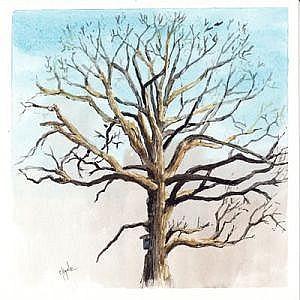
When the soul listens,
it speaks a language that lives
and softly whispers,
making itself heard.
Guido Gezelle
The role of art
There are different ways in which art can be used to facilitate observation. Drawing an object can force you to look with greater precision than if you were only describing it in words. Drawing gives you a deeper understanding of shapes.
Making a clay model of an animal also gives you a better idea of the exact proportions of the animal. A cow is different from a bull, and it is nothing like a rhinoceros. Compared to looking at it and recording its vital statistics, modelling an animal will result in a better observation of the proportions between height, length and breadth of the animal, of where it stands taller and which part of its body is lower.
Art can also play an important role in preparing the ground for the making of inner images in empathic observation. Artistic expression is dynamic and helps internalise an observation. Try to express the robustness and power of an oak in a painting, and try to also express the lithe gracefulness of the birch. Colour can be used to great effect to express the mood of the tree. Artistic creation builds a relationship between you and the object, thus bringing you closer to a state of empathic observation. This effect is even stronger if you draw trees from memory than when you draw them directly.
Artistic activity is not a goal in itself, but an aid to improve one's observations. This can be achieved by all types of artistic expression: painting, drawing, modelling, sculpture, song, speech, dance and eurythmics.
Literature
(and further reading)
- Bockemühl, J., 1982. In partnership ith nature. BD Association.
- Bockemühl, J., 1984. Dying forests.
- Bockemühl, J., 1992. Towards a phenomenology of the etheric world. SteinerBooks, London.
- Colquhoun, M. & A. Ewald, 1996. New Eyes for Plants – A workbook for observing and drawing plants. Hawthorn Press, Strout.
- Goethe, J.W. von, 1789. Einfache Nachahmung der Natur, Manier, Stil. In: Hamburger Ausgabe, Band 12, 1994, C.H. Beck, München.
- Steiner, R., 2002 (1920). The boundaries of knowing nature, the 8th lecture. SteinerBooks, London.

Water color of an oak
Exercises
Draw a tree or a plant. At first slowly and with as much detail as possible. After that quick and try to express what the plant says.
Make a model of an animal in clay. Look for the proportions.
Go somewhere and make observations. Make if necessary a quick drawing. Go home and draw the situation out of your memory.
